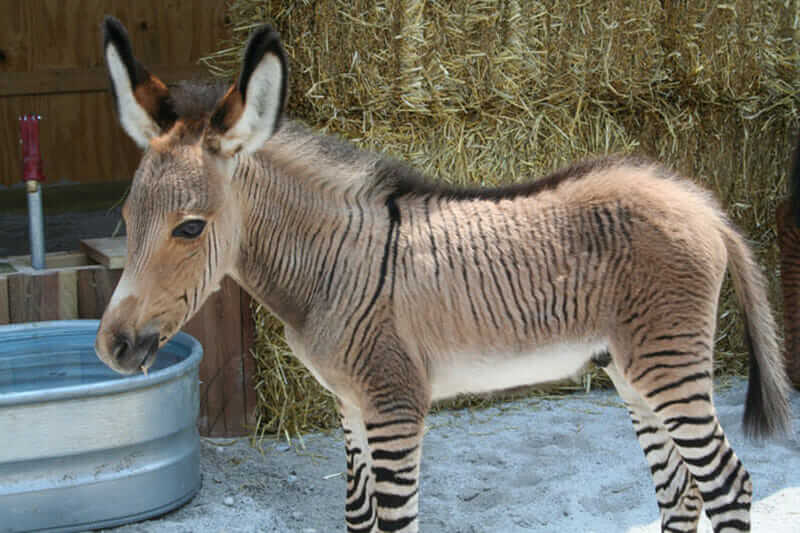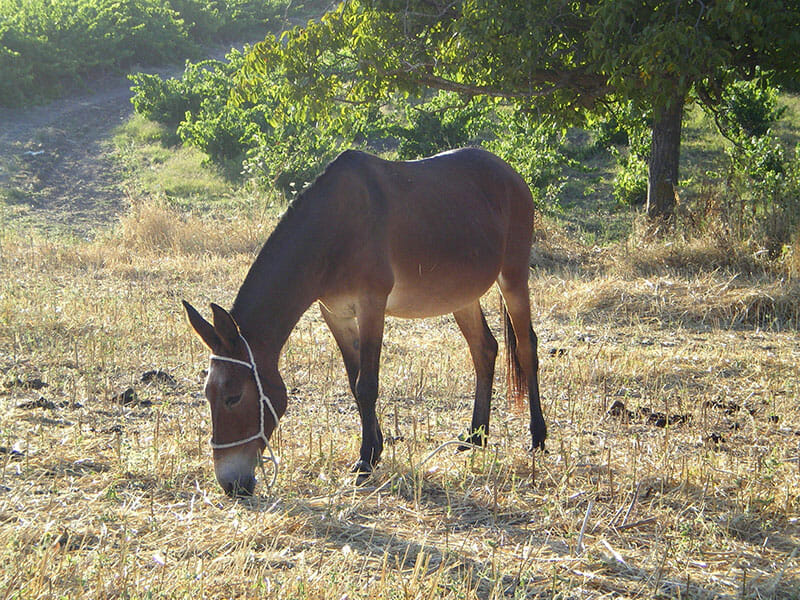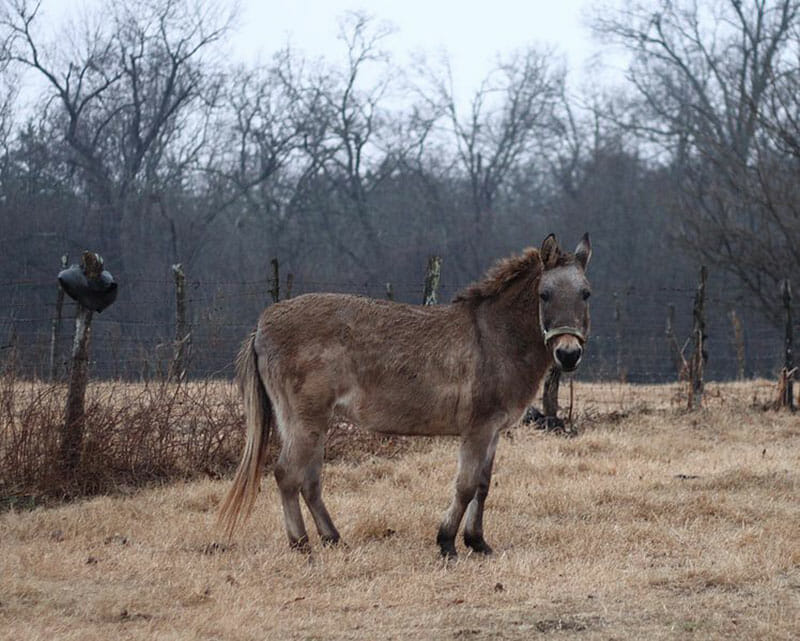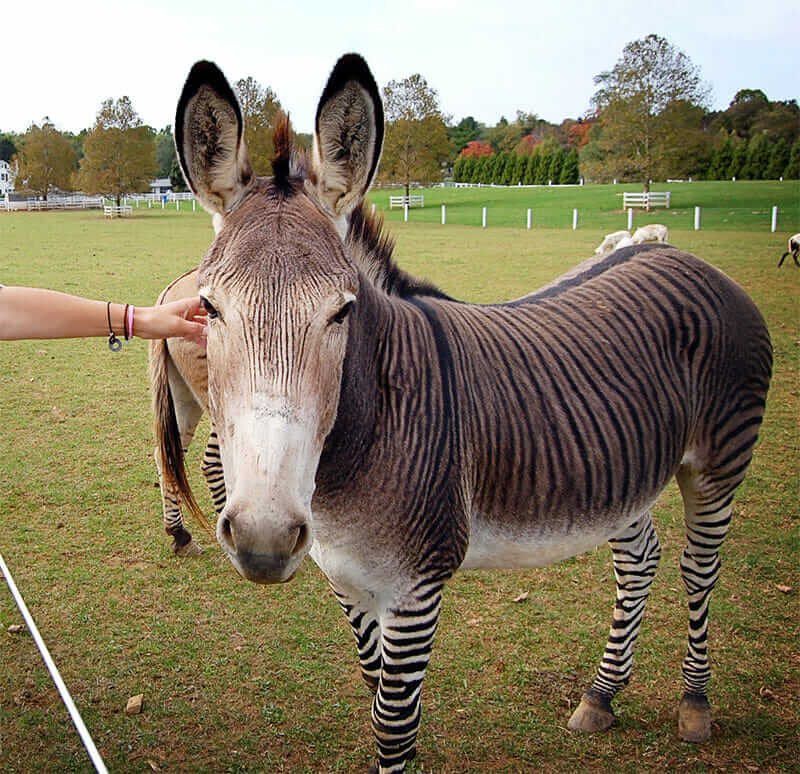Zonkeys, Hinnies and Zebrasses (Oh My)
The mathematics of donkeys and their fellow equines.
Zonkeys, Hinnies and Zebrasses (Oh My)
The mathematics of donkeys and their fellow equines.

Curious cross-breeders and barnyard geneticists have been mix-matching equine breeds for hundreds of years, coming up with some powerful pullers, classic coats and a hilarious naming convention.
We’ve done the math for you, and below are all the equations you’ll need to wrap your head around the perplexing taxonomy of odd-toed ungulates. Let’s start simple.

When it comes to equine hybrids, mules are by far the most popular. Mules make fantastic draught and pack animals and are said to have the strength and power of a horse with the hardiness and sure-footedness of an ass. As donkeys have 62 chromosomes and horses have 64, most mules are born sterile; their set of 63 cannot evenly split.
In extremely rare instances fertile female mules – known as mollies – have been known to produce offspring, like Kule Mule Amos, a foal born in Colorado just a few years ago, or Morocco’s miracle mule. This event is so rare that the Romans even had a saying akin to our idiomatic “when hell freezes over”: Cum mula peperit, or, when a mule foals.

The inverse of the previous equation, hinnies are much less common than mules and are not generally bred for commercial use. Hinnies tend to look more like horses than mules do, usually retaining the long, elegant tail of the sire and being graced with a more traditional horse-shaped skull.

We didn’t make this name up; the offspring of such a union produces the unlikely, and rare, zebrass. Like most equine hybrids, the traits of the sire are generally more predominant. Such is the case with the zebrass, which usually sport fairly traditional donkey heads and torsos but look as if they’ve slipped into a pair of zebra print tights.

A zoo favorite, the zonkey is a relative regular in the hybrid world, likely because the hybridization has a higher success rate than most. Zonkeys have been bred since at least the 1850s and have captivated scientists, collectors and heads of state ever since.
In the early 20th century King Menelik of Abyssinia (now Ethiopia) gifted a zebra stallion to President Roosevelt. During the zebra’s time at the National Zoo he was loaned out several times to the U.S. Department of Agriculture for use in cross-breeding experiments. At least one of the results of these experiments showed up on the bill of the Sells-Floto circus.
Follow us

This work is licensed under a Creative Commons Attribution-NoDerivatives 4.0 International License.
Want to republish a Modern Farmer story?
We are happy for Modern Farmer stories to be shared, and encourage you to republish our articles for your audience. When doing so, we ask that you follow these guidelines:
Please credit us and our writers
For the author byline, please use “Author Name, Modern Farmer.” At the top of our stories, if on the web, please include this text and link: “This story was originally published by Modern Farmer.”
Please make sure to include a link back to either our home page or the article URL.
At the bottom of the story, please include the following text:
“Modern Farmer is a nonprofit initiative dedicated to raising awareness and catalyzing action at the intersection of food, agriculture, and society. Read more at <link>Modern Farmer</link>.”
Use our widget
We’d like to be able to track our stories, so we ask that if you republish our content, you do so using our widget (located on the left hand side of the article). The HTML code has a built-in tracker that tells us the data and domain where the story was published, as well as view counts.
Check the image requirements
It’s your responsibility to confirm you're licensed to republish images in our articles. Some images, such as those from commercial providers, don't allow their images to be republished without permission or payment. Copyright terms are generally listed in the image caption and attribution. You are welcome to omit our images or substitute with your own. Charts and interactive graphics follow the same rules.
Don’t change too much. Or, ask us first.
Articles must be republished in their entirety. It’s okay to change references to time (“today” to “yesterday”) or location (“Iowa City, IA” to “here”). But please keep everything else the same.
If you feel strongly that a more material edit needs to be made, get in touch with us at [email protected]. We’re happy to discuss it with the original author, but we must have prior approval for changes before publication.
Special cases
Extracts. You may run the first few lines or paragraphs of the article and then say: “Read the full article at Modern Farmer” with a link back to the original article.
Quotes. You may quote authors provided you include a link back to the article URL.
Translations. These require writer approval. To inquire about translation of a Modern Farmer article, contact us at [email protected]
Signed consent / copyright release forms. These are not required, provided you are following these guidelines.
Print. Articles can be republished in print under these same rules, with the exception that you do not need to include the links.
Tag us
When sharing the story on social media, please tag us using the following: - Twitter (@ModFarm) - Facebook (@ModernFarmerMedia) - Instagram (@modfarm)
Use our content respectfully
Modern Farmer is a nonprofit and as such we share our content for free and in good faith in order to reach new audiences. Respectfully,
No selling ads against our stories. It’s okay to put our stories on pages with ads.
Don’t republish our material wholesale, or automatically; you need to select stories to be republished individually.
You have no rights to sell, license, syndicate, or otherwise represent yourself as the authorized owner of our material to any third parties. This means that you cannot actively publish or submit our work for syndication to third party platforms or apps like Apple News or Google News. We understand that publishers cannot fully control when certain third parties automatically summarize or crawl content from publishers’ own sites.
Keep in touch
We want to hear from you if you love Modern Farmer content, have a collaboration idea, or anything else to share. As a nonprofit outlet, we work in service of our community and are always open to comments, feedback, and ideas. Contact us at [email protected].by Tyler LeBlanc, Modern Farmer
December 10, 2014
Modern Farmer Weekly
Solutions Hub
Innovations, ideas and inspiration. Actionable solutions for a resilient food system.
ExploreExplore other topics
Share With Us
We want to hear from Modern Farmer readers who have thoughtful commentary, actionable solutions, or helpful ideas to share.
SubmitNecessary cookies are absolutely essential for the website to function properly. This category only includes cookies that ensures basic functionalities and security features of the website. These cookies do not store any personal information.
Any cookies that may not be particularly necessary for the website to function and are used specifically to collect user personal data via analytics, ads, other embedded contents are termed as non-necessary cookies.
Zebras are wild animals with evolved to survive defenses, they kick to kill and are dangerous. The only attribute to inspire cross breeding would be for its immune system and to create a pack animal that was hardier on the African continent. The variance in chromosomes make that complicated, first breeding Zebras and for ones that are most tame, that’s domestication and its never been done on the Zebra.
I think they should leave well enough alone. God doesn’t need our help and we often cause problems where there were none
The correct name for a horse/zebra cross is Zorse. The cprrect name for a donkey/zebra cross is Zonkey.